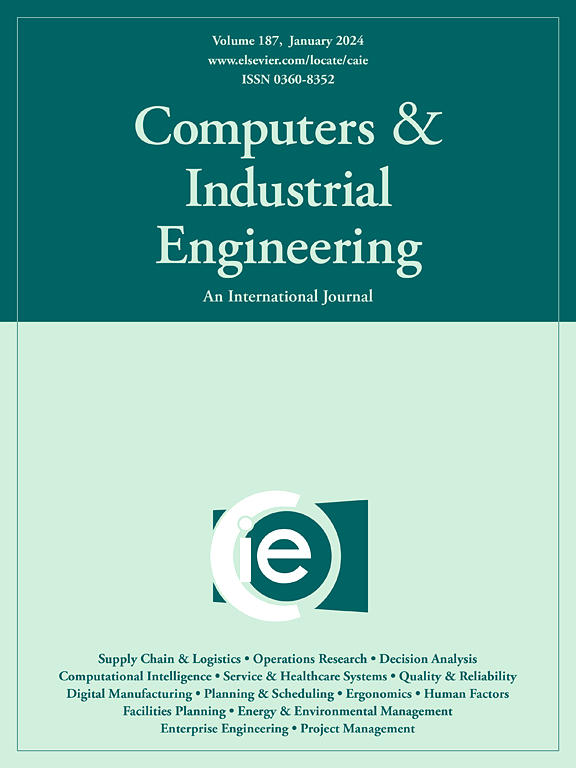非平稳条件下故障预测的连续学习方法:在状态监测数据流中的应用
IF 6.5
1区 工程技术
Q1 COMPUTER SCIENCE, INTERDISCIPLINARY APPLICATIONS
引用次数: 0
摘要
对剩余使用寿命(RUL)的准确预测对于预测性维护(PdM)至关重要,它允许及时采取行动,减少停机时间和维护费用。然而,传统的RUL估计技术往往难以适应不断变化的操作条件和数据漂移,限制了它们在动态工业环境中的使用。本研究提出了为这些非平稳条件设计的持续学习框架,其中模型逐步从新数据中学习,同时保留先前获得的见解。通过解决诸如灾难性遗忘之类的问题,所提出的技术增强了鲁棒性和适应性,使其适用于现实世界的场景。该框架的有效性使用现实工业场景数据集进行验证,如AI4I和N-CMAPSS,其中包括各种场景,如制造业和航空航天业务。实验结果表明,与传统方法相比,预测精度和模型弹性有显著提高。将多层感知器(MLP)和卷积神经网络(CNN)等深度神经网络架构整合到持续学习范式中,可以优化动态数据转移的性能。本研究通过在可靠性和效率至关重要的部门为PdM提供可扩展和实用的解决方案,推进了RUL估计方法。它能够适应不断变化的操作条件,并提供可操作的见解,支持改进的维护策略,减少意外中断和运营成本。所提出的框架尤其适用于制造业、能源和航空航天等行业,这些行业的非平稳数据和不断演变的故障模式带来了重大挑战。本文章由计算机程序翻译,如有差异,请以英文原文为准。
A continual learning approach for failure prediction under non-stationary conditions: Application to condition monitoring data streams
Accurate forecasting of Remaining Useful Life (RUL) is crucial for predictive maintenance (PdM), permitting prompt actions that decrease downtime and maintenance expenses. Yet, conventional RUL estimation techniques often struggle to adjust to changing operational conditions and data drift, restricting their use in dynamic industrial settings. This research presents a continual learning framework designed for these non-stationary conditions, where models progressively learn from new data while retaining previously gained insights. By tackling issues such as catastrophic forgetting, the proposed technique enhances robustness and adaptability, rendering it applicable to real-world scenarios. The framework’s efficacy is validated using realistic industrial scenario datasets, like AI4I and N-CMAPSS, which include varied scenarios such as manufacturing and aerospace operations. Experimental findings showcase significant enhancements in prediction accuracy and model resilience over traditional methods. Incorporating deep neural network architectures, such as Multi-Layer Perceptrons (MLP) and Convolutional Neural Networks (CNN), within the continual learning paradigm, optimizes performance for dynamic data shifts. This study advances RUL estimation methods by offering a scalable and practical solution for PdM in sectors where reliability and efficiency are paramount. Its capacity to adapt to evolving operational conditions and provide actionable insights bolsters improved maintenance strategies, curtailing unexpected disruptions and operational costs. The proposed framework is particularly beneficial for sectors like manufacturing, energy, and aerospace, where non-stationary data and evolving failure modes present significant challenges.
求助全文
通过发布文献求助,成功后即可免费获取论文全文。
去求助
来源期刊

Computers & Industrial Engineering
工程技术-工程:工业
CiteScore
12.70
自引率
12.70%
发文量
794
审稿时长
10.6 months
期刊介绍:
Computers & Industrial Engineering (CAIE) is dedicated to researchers, educators, and practitioners in industrial engineering and related fields. Pioneering the integration of computers in research, education, and practice, industrial engineering has evolved to make computers and electronic communication integral to its domain. CAIE publishes original contributions focusing on the development of novel computerized methodologies to address industrial engineering problems. It also highlights the applications of these methodologies to issues within the broader industrial engineering and associated communities. The journal actively encourages submissions that push the boundaries of fundamental theories and concepts in industrial engineering techniques.
 求助内容:
求助内容: 应助结果提醒方式:
应助结果提醒方式:


